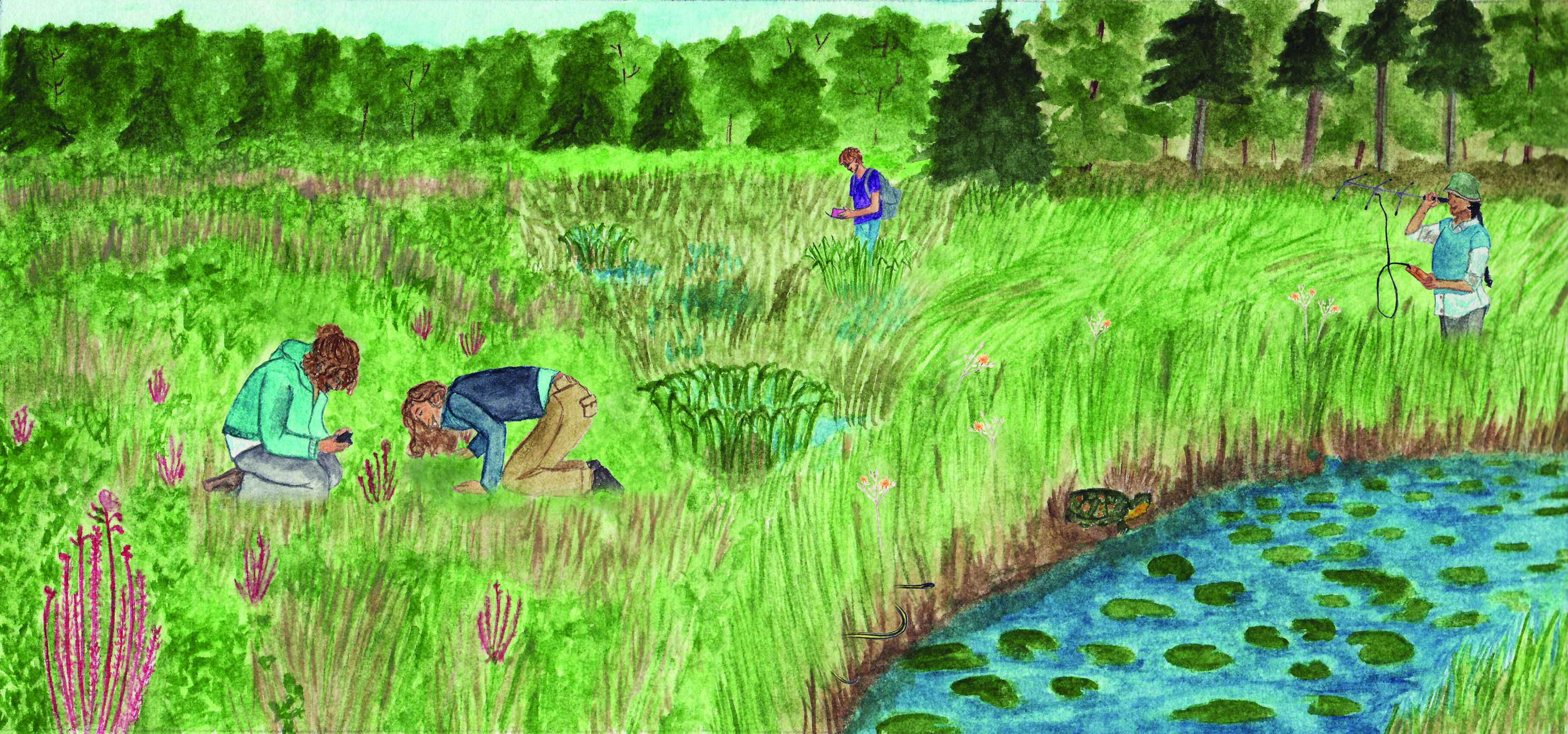
Wetlands act as living filters and sponges. They maintain high water quality by filtering out sediments and chemicals and supply clean water to important underground sources. They soak up water during periods of high precipitation, reduce the chances of flooding, and release water during times of drought. Wetlands are areas of high biodiversity and are home to a diverse number of species that require this habitat to live and survive.
Maintain the natural vegetation around wetlands.
Without this vegetation, your wetland will not be able to properly function as a living filter and sponge. This will result in decreased water quality and wildlife habitat. This vegetation will also allow the wetland to naturally expand and contract during wet and dry seasons. Having 100 m (330 feet) of natural vegetation around the wetlands on your property is ideal, however any amount is beneficial - the more the better.
Do not infill wetlands, drain or divert their water, or drive vehicles in or near them.
These practices alter the water flow (hydrology) through the area and reduce water quality by decreasing the wetlands natural sediment and pollution filtering capabilities. Off-highway or all-terrain vehicle use in wetlands crushes plants and compacts the soil; this creates hard, dry tracks that increase erosion and the chances of introducing invasive alien plant species. This makes it very difficult for native vegetation to grow back. Call the Department of Natural Resources (1-800-565-2224) if you observe anyone driving off-highway vehicles in wetlands or any sensitive area. Fines for driving vehicles in wetlands range from 500 to 2000 dollars. All wetland alterations require approval from Nova Scotia Environment (refer to the 'Contact Information' page).
Do not build roads near or through wetlands.
Contact Nova Scotia Environment (refer to the 'Contact Information' page) to determine whether any road building plans could negatively impact a wetland or watercourse, and to see if a permit is required. Roads impact wetlands by altering water movements, and result in road mortality when species try to reach areas cut off by the road.


